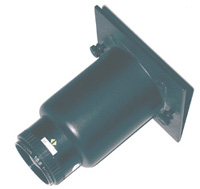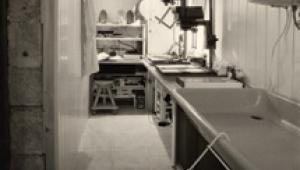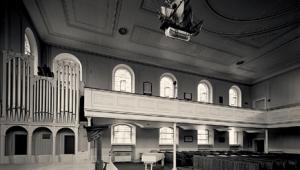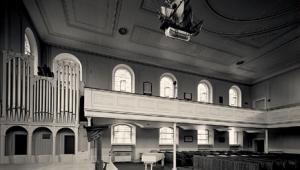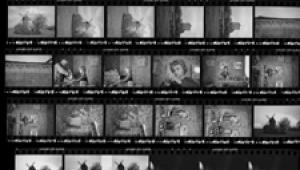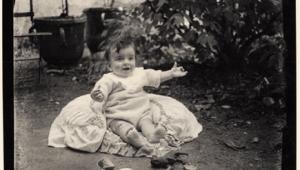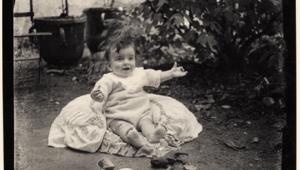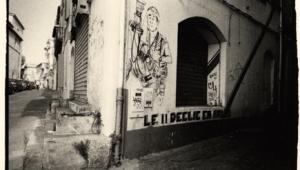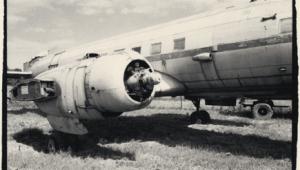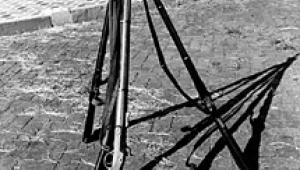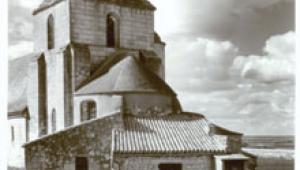The Darkroom
Using The Right Enlarger Lens, Exception To The Rules
Almost all enlargers will accept lenses of different focal lengths, designed so you can match the focal length of the lens to the size of the negative that you are printing. If you do not, your negative might not print correctly. The rule of thumb is that the focal length of the lens must be equal to, or longer than, the diagonal of the negative, as measured in millimeters. If it is not, the lens might not be able to "see" all of the negative. For example, a 35mm negative requires a focal length of the lens that is at least 50mm. A 6x4.5 negative requires at least a 75mm lens. A 6x6 negative requires at least an 80mm lens. A 6x7 negative requires at least a 90mm lens. And, a 4x5 negative requires at least a 150mm lens. These lenses are considered to be the "normal" or "standard" focal length of the lens for the indicated film sizes. Now, that's the easy part. The problems come with all the exceptions to the rule! If you use a lens with a focal length that is longer than the diagonal of the film, you will get a perfectly good picture. You'll just have to raise the head of the enlarger a little higher in order to get the same size print that you could have made with a shorter focal length lens. |
|||
However, as you raise the head higher and higher, the enlarger is more likely to become unstable and vibrate a little during the exposure, resulting in a picture that is not as sharp as it might have been. Think of an enlarger with the head raised up all the way in the air like a watermelon on the end of a stick. It will vibrate at any excuse to do so. I use a Beseler 45V-XL enlarger with a Beseler/ Minolta 45A Color Head. As big and as powerful as that chassis is, I still have it anchored at the top of the column as a precaution against harmonic vibration. It really doesn't take much of a support at the top of the column to prevent the subtle harmonic vibration that can occur. Even something as light as a piece of coat-hanger wire will sometimes be enough to stabilize the column. Regardless of your enlarger and how you stabilize it, as a general rule of thumb, you should still try to make prints with the head of the enlarger as low as possible. That means that you must use a normal focal length lens, one that has a focal length that is equal to the diagonal of the film mentioned earlier. If you use a lens that is shorter than normal, the lens will not be able to "see" the entire negative and will vignette the corners a bit. If the lens is not a whole lot shorter than the diagonal of the film you can trick the lens into working with the film by stopping it down a bit. But, there are limits to how effective this will be. Lenses that are shorter than the diagonal of the film are typically used when you want to make a large magnification of just a small portion of the negative. When doing this, it is important to re-position the negative in the negative carrier so that the portion you want to enlarge is centered over the center line of the lens. I use a 4x5 glass negative carrier for such catchall applications. With some black construction paper I can easily make a mask for almost any odd size negative that I might have to work with. |
|||
Of course, I don't like to use a glass negative carrier if I don't have to. They are just magnets for dust. With glass on both sides of the negative you have a total of six surfaces (both sides of both pieces of glass plus both sides of the negative) that have to be dust-free. That's almost an impossibility. Given a choice, always try to use a glassless negative carrier. And, I'm not too keen on Anti-Newton ring glass, either. I worry that the special glass will add a little diffusion to the projected image. Newton rings are the rainbow patterns that form when the gelatin of the negative's emulsion comes into intimate contact with regular glass. If you must use a glass carrier, I recommend that you use one made from regular glass. To prevent the problem of Newton rings, just use a household hair dryer and blow hot air on the negative's emulsion for a few minutes before putting the negative in the negative carrier. The hot air will drive some of the moisture out of the emulsion, and therefore prevent the forming of the rainbow patterns. Just be aware that in a little while, the emulsion will once again soak up moisture from the humidity in the air. And, darkrooms are usually very damp places with lots of humidity in the air. Unless, of course, your darkroom is in Arizona. Since I use several different focal length lenses in my darkroom, I used to have the problem of finding--in the dark--the lens that I wanted to use. I finally hit upon the idea of using white-colored vinyl press-on lettering to identify the focal length of the lens right on the lensboard. See Figure 1. You can buy such press-on lettering at most art supply stores. Most enlargers will allow you to use a normal lensboard for most lenses. However, a special, recessed lensboard is usually necessary for lenses with focal lengths shorter than 50mm. See Figure 2. Without the recessed lensboard, the lens cannot be moved close enough to the negative to focus correctly. Likewise, with some of the longer focal length lenses, you may want to use an extended lensboard. See Figure 3. An extended lensboard might be actually required depending on how far the lens bellows will extend. It also allows you to use the longer focal length lens for making very tiny pictures--smaller than the negative. The technique of making such pictures requires a great deal of extension of the lens bellows. An extra inch or so can be a great help. If you have questions about
your lenses you can contact me by sending e-mail to editorial@shutterbug.net. |


